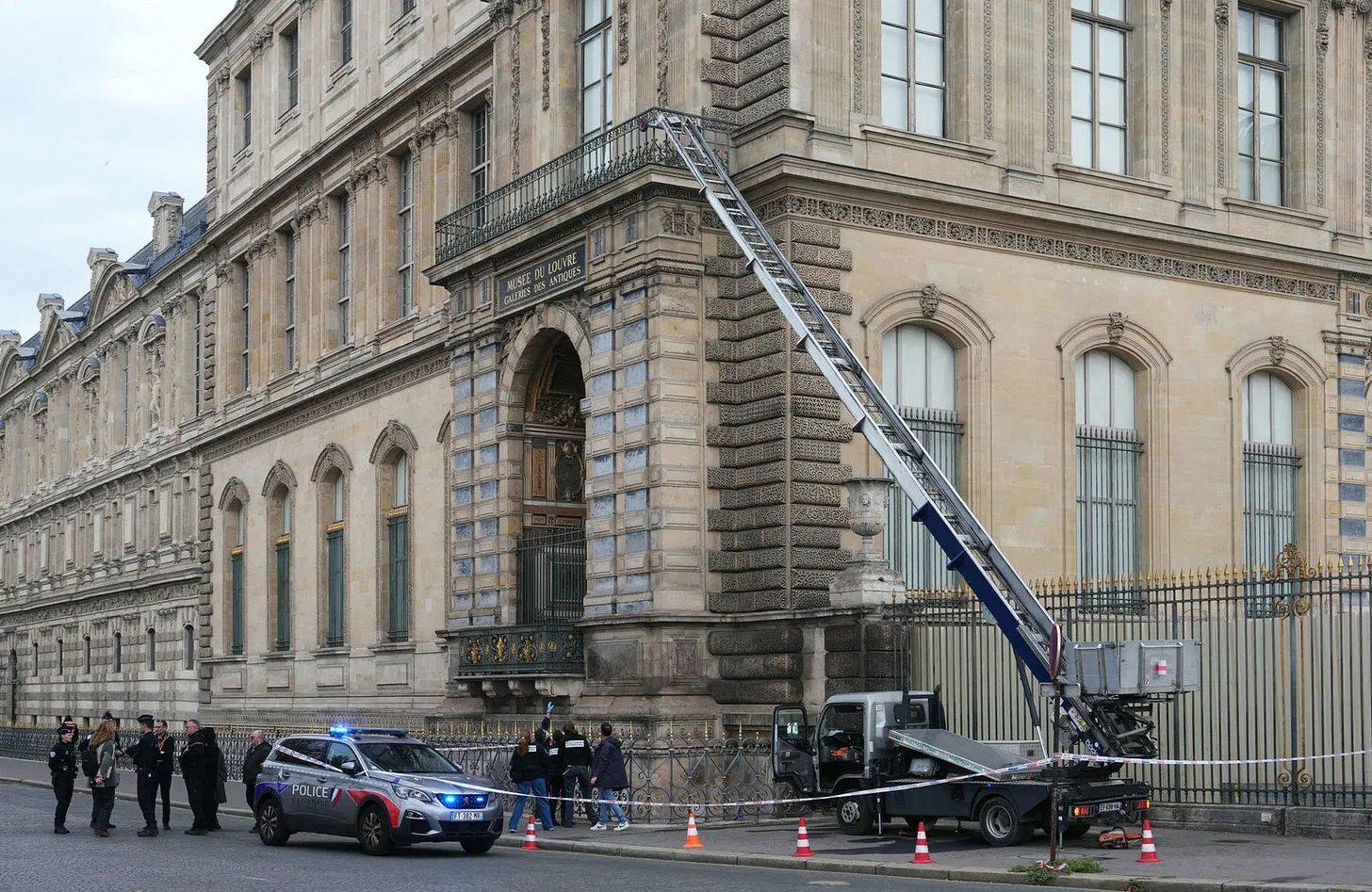How the Louvre Lost Its Crown Jewels
A story, quote, and lesson about protecting what you value most
Within minutes, they were inside.
On a quiet Sunday morning in October 2025, a group of thieves dressed as construction workers pulled up to the Louvre Museum in Paris, one of the most famous and heavily guarded museums in the world.
According to French investigators, the men used little more than a van, a lift, and some basic power tools to break in. No explosives. No high-tech gadgets. Just a simple, fast plan.
They drove up to the Seine-facing side of the building, hoisted themselves onto a balcony, cut through a window, and stormed the Galerie d’Apollon, home to France’s crown jewels.
In under eight minutes, they smashed display cases, stole jewels worth almost $100 million, and escaped on scooters before anyone could stop them.
The alarms were triggered. The guards tried to intervene but backed down after being threatened. And by the time the police arrived, the thieves were long gone.
It was too easy.

The world was stunned. How could the Louvre, a place synonymous with world-class art and security, be breached so effortlessly? How could priceless treasures vanish so fast, right under the nose of modern protection systems?
The robbery was especially shocking, not only because of the value lost, but because it revealed how easily the most famous museum in the world could be breached with what looked like rudimentary tools and a calculated plan.
These were some of the security measures in play (or not) during the time of the robbery:
There is no footage or photos of the robbers because there were no cameras at all where they stored the jewels.
The museum had no security or bulletproof glass at all. The jewels were stored behind common household glass.
There was no audible or visible alarm, just a silent one that signaled the guards in the security office.
Laurence Des Cars, the current Museum Director at the Louvre said that she was warned about the museum’s “aging equipment” and how it could impact security. She recognizes the shortcomings that led to the thieves’ success and strives to restore the museum’s reputation.
Still, the public reveled in the seemingly simple plan of the thieves:
“You can get away with anything wearing a yellow work vest with orange cones. Literally anything you want”
“I kinda admire how stupidly simple this heist was.”
“Honestly embarrassing that the museum is that lightly guarded.”
- Several comments on Reddit talking about the heist.
There’s a strange irony in what happened at the Louvre. The world’s most visited museum, home to the Mona Lisa, the Venus de Milo, and centuries of human achievement, fell victim to something most of us fall victim to in our own lives: complacency.
When we feel secure, we stop checking the locks. When something’s been safe for a long time, we stop worrying it might break. But security isn’t a status, it’s a practice.
Just like the Louvre’s crown jewels, the most valuable parts of our lives aren’t the ones we can replace or insure. They’re our relationships, our health, our integrity. And too often, those are the ones we leave unguarded.
You might not think of it this way, but the same principle applies: neglect invites theft. Neglect your relationships, and distance will quietly take their place. Ignore your health long enough, and stress or illness will steal your energy. Take your peace for granted, and distraction will rob it piece by piece.
The Louvre didn’t lose its jewels because it lacked technology. It lost them because it believed its defenses were impenetrable.
That’s the danger of comfort. The moment we stop questioning whether something is truly secure, it starts to weaken. Even the strongest walls need maintenance, and even the safest routines need revisiting.
So now I ask you:
What part of your life are you assuming is safe, and what small act of protection could you take today to ensure it remains that way?



Very smart reflexión. Let us check what we can fix in our lives. Let us appreciate what we have while we still own it.
I love the reflection of this and all the meaning you gave to it. It’s really true